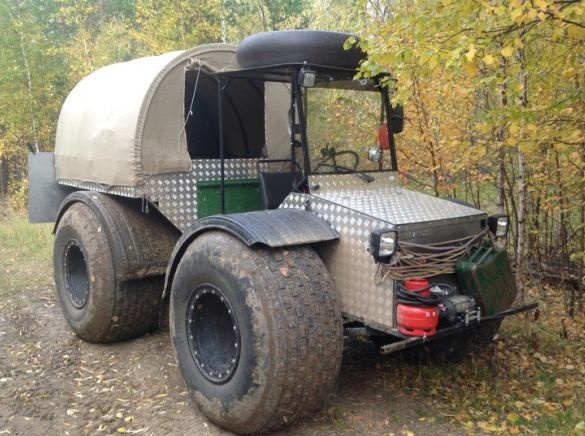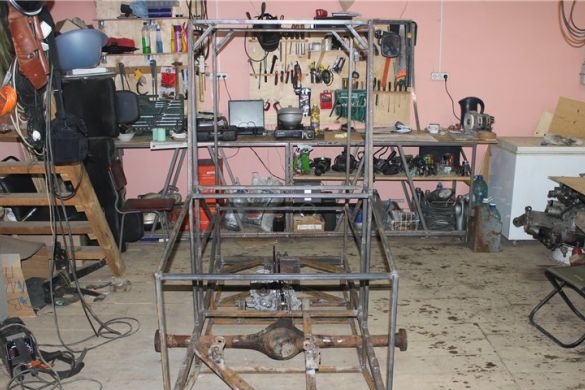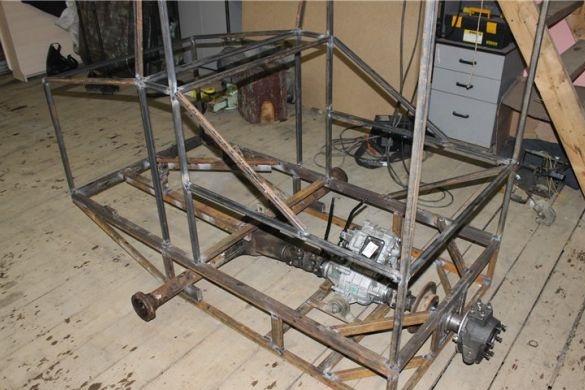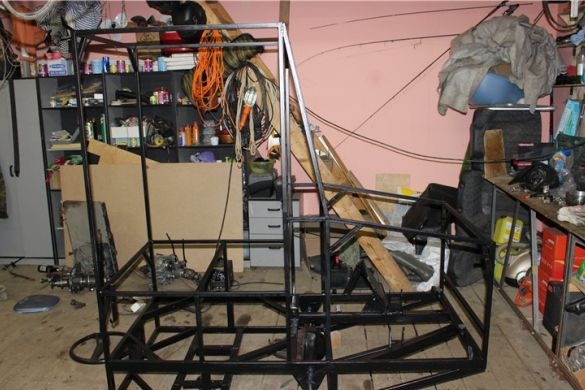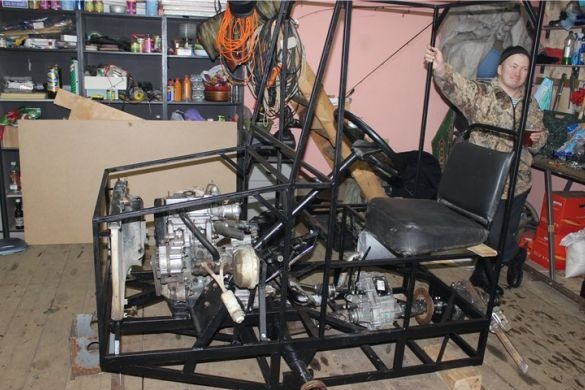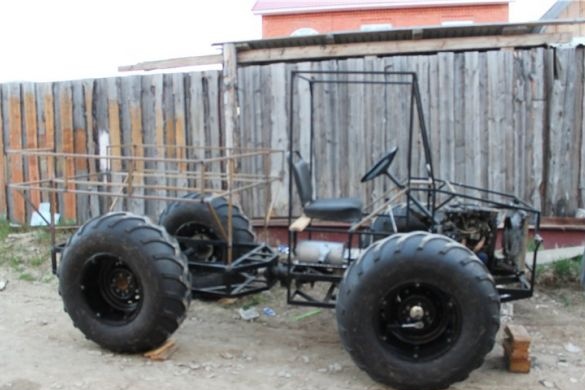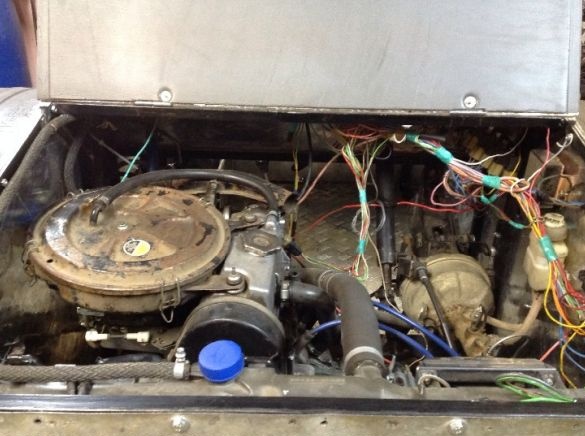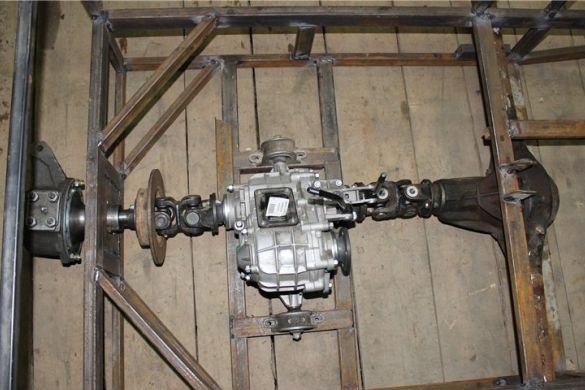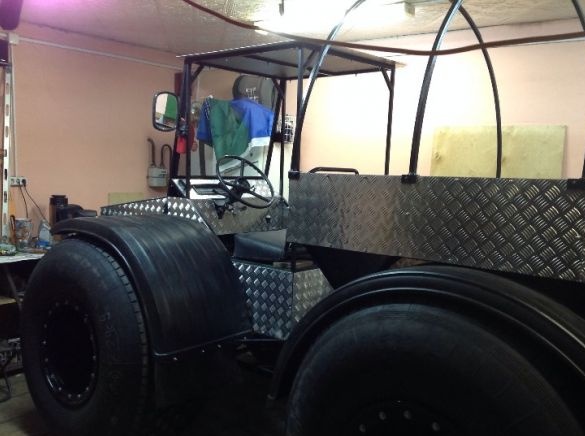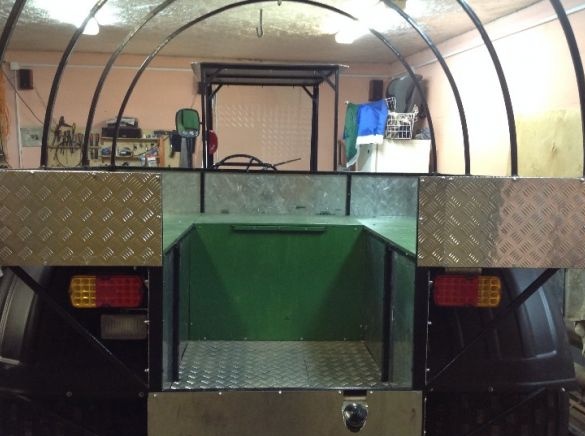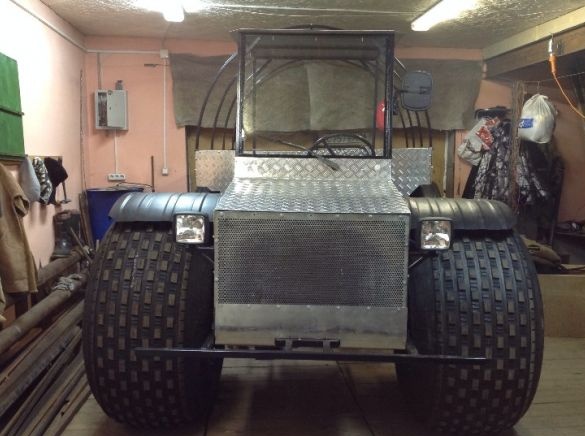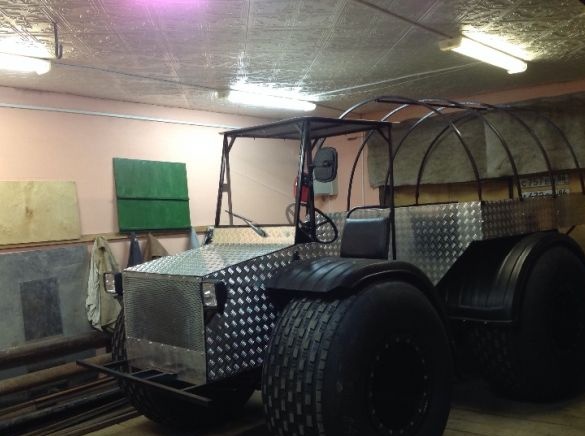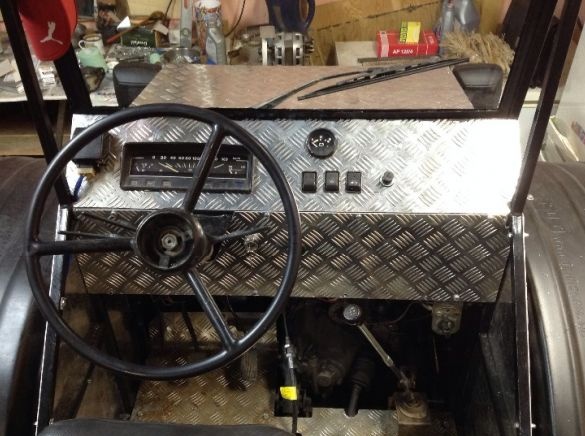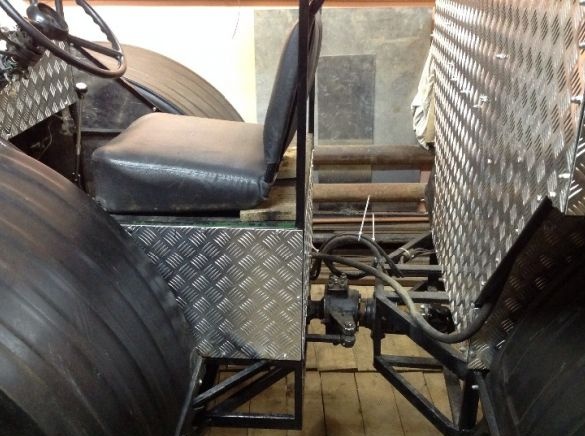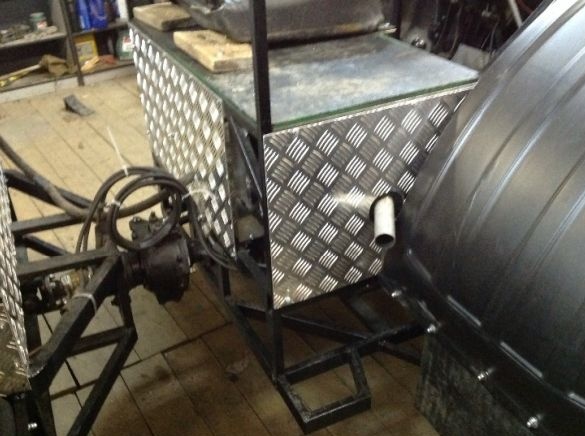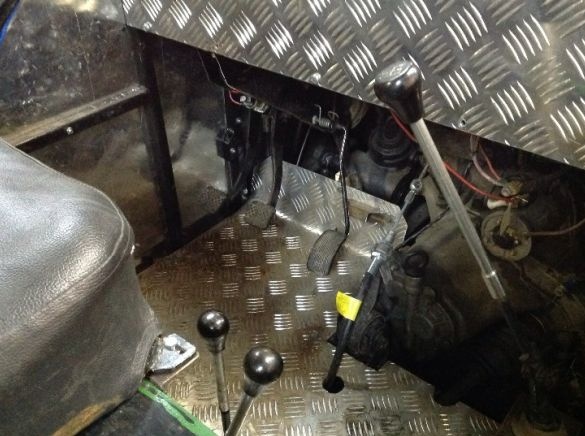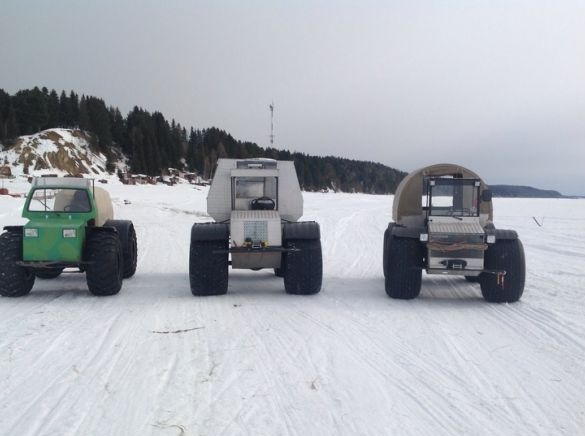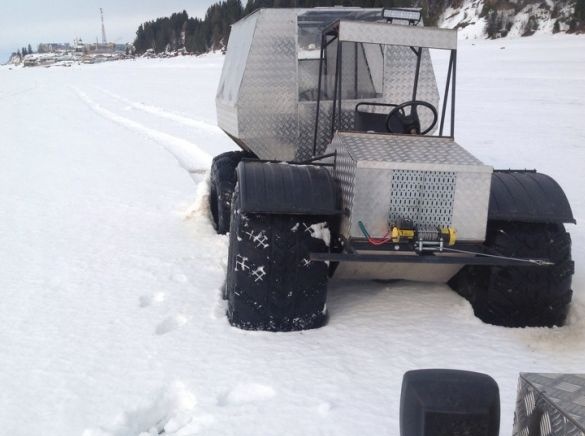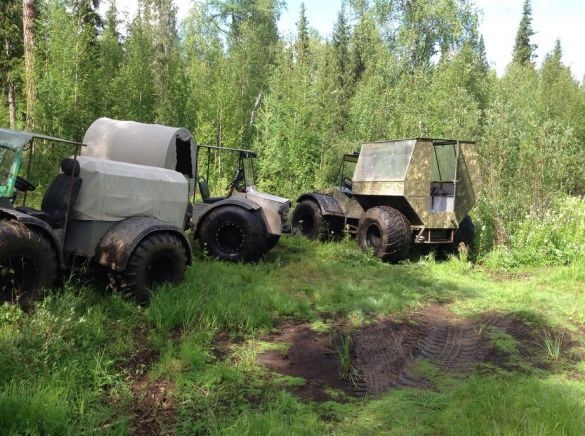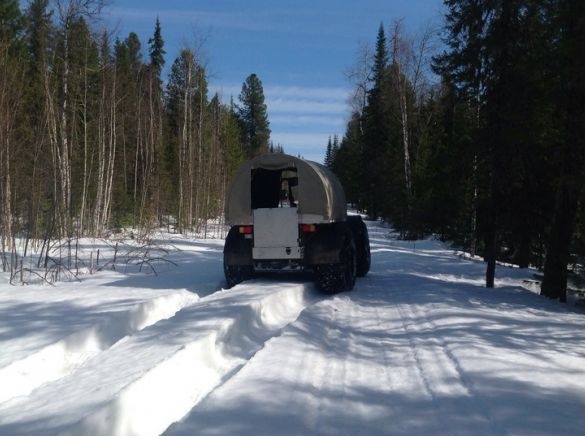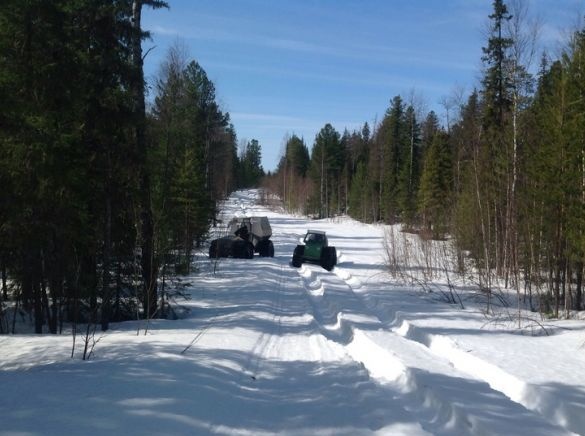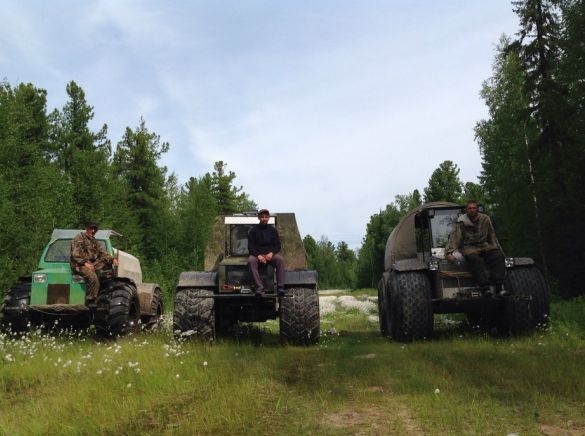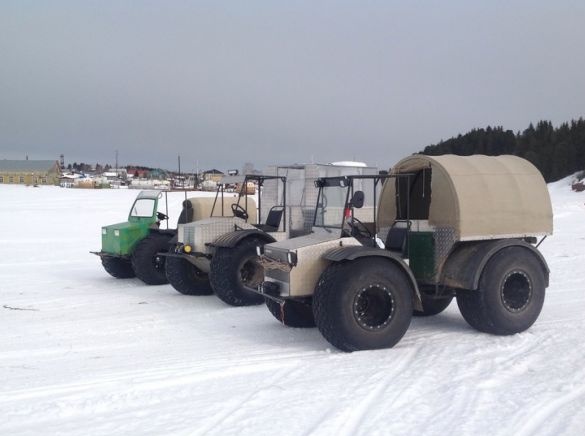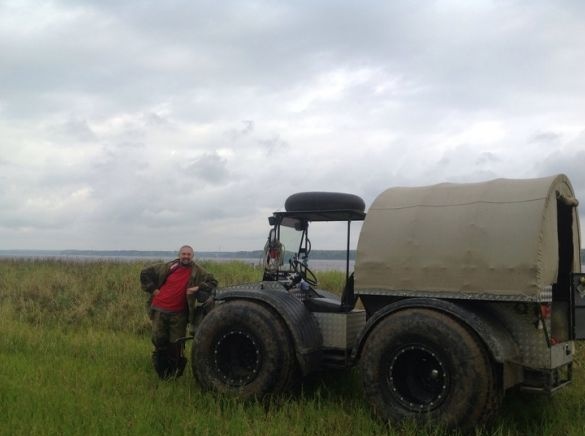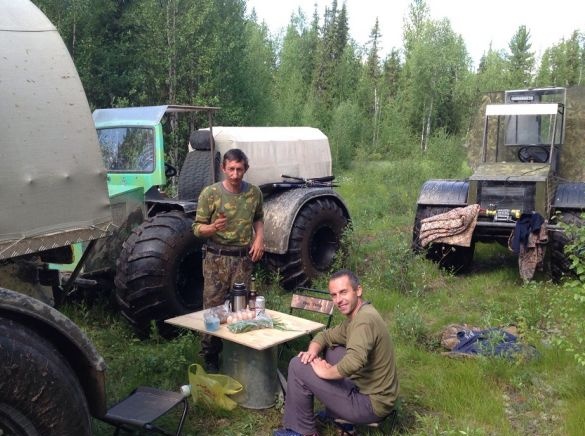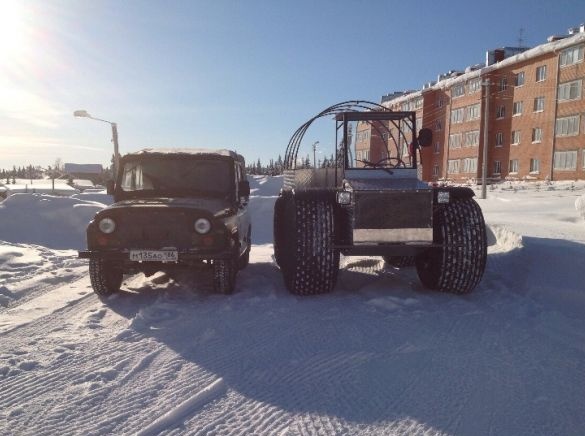This all-terrain vehicle It was created for hunting and fishing, therefore, it has a warmed kung for spending the night in the winter season. The machine has positive buoyancy. but poor control on the water. By land, the all-terrain vehicle has excellent cross-country ability.
To create this all-terrain vehicle, the following details and materials were needed:
1) Internal combustion engine from vases 1111
2) Bridges from the car Niva
3) fist bridge from UAZ
4) manual gearbox from the Niva
5) profile pipe size 50 to 20 and 40 to 20
6) the steering is taken from UAZ 31512 without hydraulics.
7) Homemade wheels from A. Vologda
8) Wheels Trackol 1300 to 600
9) Windshield for special. order
10) Janitor from the car oka
11) The pedal assembly is also taken from oki
12) disc brakes and calipers from Oka
13) Hella Headlights
14) amg 2 mm was used as a casing
15) exhaust pipe from oki
16) Toyota carina radiator
17) a cap from a 5 liter bottle as a cork on a radiator.
18) Warn rt40 winch
Consider in more detail the creation of the main nodes of the all-terrain vehicle.
The frame was created independently entirely from a profile pipe.
The bipod from the "loaf" was shortened.
Then the author proceeded to install bridges and main units on an all-terrain vehicle:
The weight of the all-terrain vehicle is 800 kilograms with oil and antifreeze. the front truck of the all-terrain vehicle weighs 480 kilograms, and the rear 300 kilograms. Thus, the ratio of the mass of the all-terrain vehicle to the carrying capacity of the wheels is very good and the all-terrain vehicle will have positive buoyancy. That is, even the front trolley will not fall below the middle of the wheel.
A steering column was installed from the Niva car, as well as 1300 wheels and an engine from the oka. The engine thrust in such a scheme is enough to pass through bogs and bogs at minimum speeds. The total gear ratio is 130, the author plans to increase it to 160.
Then the author proceeded to create a frame for the kunga machine:
The next step, the author took up the skin of the car:
In the fall, a hiking route was undertaken with a total length of 140 kilometers in a group of all-terrain vehicles. During the journey 40 liters of fuel were consumed, with an all-terrain vehicle loading 200 kg of cargo and two passengers. The working pressure of the chambers on simple sections of the track was set at 0.12, and on complex sections at 0.05.
Twice during the journey, a winch was used.
From the breakdowns there was the following: a bolt was unscrewed on the parts of the gearshift shaft, the part fell off but was put in place in the traveling conditions. The relay-generator was still out of order, I had to bring the wires from the brush to a straight line.
After the journey, the author made the following conclusions regarding the design of the all-terrain vehicle. All-terrain vehicle has a decent cross even on weak and grassy soils. An all-terrain vehicle floats very slowly and, due to its size, is very susceptible to wind, that is, it floats in the direction of the wind, but it comes ashore very easily. It goes very slowly through heavy mud, but it nevertheless goes, especially reducing the pressure in the tires, but nevertheless patency under such conditions is far from perfect. Without a hydraulic power steering, it is quite tiresome to make maneuvers.
Due to the large kung, visibility when reversing is completely absent.
And so it turned out quite a good unit for two people for hunting and fishing.
Pictures of the all-terrain vehicle cabin:
Reducers were installed in the bridges from the penny and the gear ratio was reduced. It remains to install a GP from 650 cubic oki.
In the future, it is planned to facilitate the front trolley and the all-terrain vehicle as a whole.
And here is a more detailed image of the fracture site:
With the onset of winter, the author began testing tires in winter snow. Trekol “checker” tires, etched before the crease began to form, showed themselves best in the snow, there are no problems with it even when climbing, the “Christmas tree” on the basis of trackol tires starts to slip strongly even on a flat surface. Ripples 1300 by 530 by 533 follow only the trail of another all-terrain vehicle, while in deep snow the all-terrain vehicle simply digs into the frame on this type of rubber.
Photos of the off-road vehicle:
The author of the all-terrain vehicle: Vladimir with the nickname "Bolodya" from the Khanty-Mansi Autonomous Okrug-Ugra.

